- Home
-
Our tours
- Our tours
- Africa
- Asia
- Latin America
- North America
- Oceania
- Holiday types
-
Accommodation
- Accommodation
- Africa
- Asia
- Latin America
- North America
- Oceania
-
Practical info
- Practical info
- Africa
- Asia
- Latin America
- North America
- Oceania
- Info & contact
- Blog
Weather in Tanzania
12.05.2024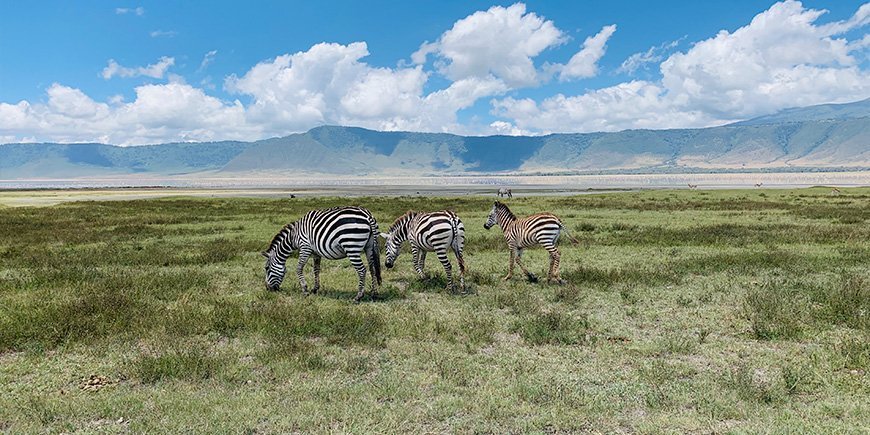
A tour to Tanzania offers everything from safari and mountain climbing to beach holidays and city life.
In this blog post, we look at Tanzania’s weather, including the climate and specific seasons, and then review Tanzania’s weather month by month.
The climate in Tanzania
Tanzania is located south of the equator and therefore has a tropical climate. However, it’s a large country, and there are local variations in the climate, which will be affected by whether you’re in the north, south, up high or on the coast.
It is, for example, generally warmer in the south at Nyerere National Park than in the north at Serengeti National Park, despite Nyerere being further away from the equator. This is because Serengeti National Park is located between 920 and 1,850 MASL, whereas Nyerere is only between 100 and 400 MASL.
Specific to Kilimanjaro
At Kilimanjaro, the temperatures are not determined by the seasons, but rather by the altitude. The temperatures here can go from being very cold to very hot on the same day, but they don’t change much from season to season.
At the base of Mount Kilimanjaro, temperatures average 21 to 27 degrees, with temperatures at the top of the mountain ranging from -7 to -29 degrees.
Weather statistics: What can you expect from Tanzania’s weather?
All year round, you can expect warm/hot daytime temperatures in Tanzania with cooler evenings and nights, and this is particularly the case in northern Tanzania. The coasts are usually hot and humid all year round, but beyond that, the seasons follow northern Tanzania.
Below, you can see weather statistics for northern (at Serengeti) and southern Tanzania (at Nyerere), as well as Zanzibar. See what the temperatures and rainfall have historically been in Tanzania and therefore also what you can typically expect.
Weather statistics for Serengeti (northern Tanzania)
| Weather statistics for Serengeti National Park: | JAN | FEB | MAR | APR | MAY | JUN | JUL | AUG | SEP | OCT | NOV | DEC |
| Average maximum temperature | 28 | 28 | 28 | 26 | 25 | 25 | 25 | 26 | 27 | 28 | 27 | 27 |
| Average minimum temperature | 15 | 15 | 15 | 16 | 15 | 13 | 13 | 14 | 14 | 15 | 15 | 15 |
| Average precipitation (mm) | 81 | 100 | 121 | 137 | 68 | 23 | 9 | 19 | 34 | 51 | 100 | 97 |
Weather statistics for Nyerere National Park (southern Tanzania)
| Weather statistics for Nyerere National Park: | JAN | FEB | MAR | APR | MAY | JUN | JUL | AUG | SEP | OCT | NOV | DEC |
| Average maximum temperature | 31 | 31 | 31 | 30 | 29 | 28 | 27 | 28 | 29 | 31 | 32 | 32 |
| Average minimum temperature | 21 | 21 | 21 | 20 | 19 | 17 | 17 | 17 | 19 | 20 | 21 | 21 |
| Average precipitation (mm) | 203 | 184 | 231 | 216 | 58 | 9 | 5 | 5 | 10 | 27 | 75 | 160 |
Weather statistics for Zanzibar
| Weather statistics for Zanzibar: | JAN | FEB | MAR | APR | MAY | JUN | JUL | AUG | SEP | OCT | NOV | DEC |
| Average maximum temperature | 30 | 31 | 31 | 29 | 28 | 27 | 27 | 28 | 29 | 30 | 30 | 30 |
| Average minimum temperature | 26 | 26 | 26 | 25 | 24 | 23 | 23 | 22 | 23 | 24 | 24 | 25 |
| Average precipitation (mm) | 51 | 44 | 142 | 234 | 185 | 58 | 42 | 37 | 33 | 72 | 106 | 112 |
| Average sea temperature | 28 | 29 | 29 | 29 | 28 | 27 | 26 | 26 | 26 | 27 | 28 | 29 |
Tanzania’s seasons
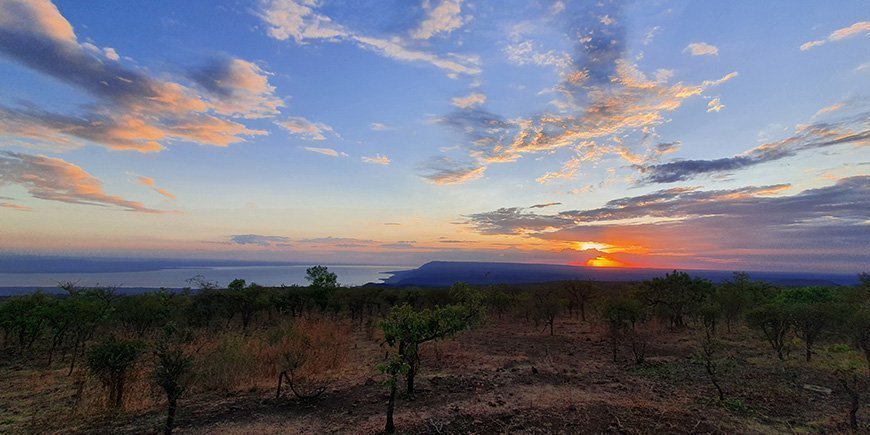
Like other tropical countries, Tanzania’s weather is affected by rainy and dry seasons.
As a rule, Tanzania has a dry season between June and October and a rainy season between November and May.
However, the rainy season in many of the popular destinations in northern Tanzania and on the coast, including at Serengeti National Park, on Kilimanjaro and in Zanzibar, is replaced by a few months of a short dry season in January and February. As there is a period of dry weather in January and February, November and December are also known as the short rainy season.
Rainy season in Tanzania: November to May
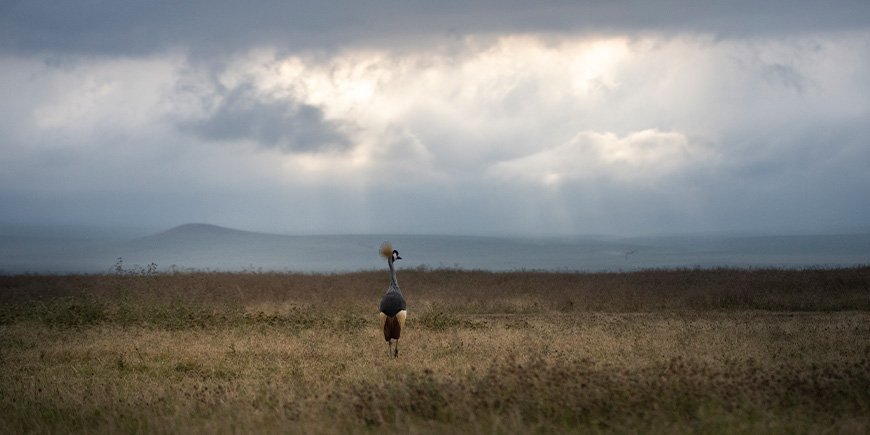
The rainy season in Tanzania is between November and May, although interrupted by a short dry season in January and February in some regions. Between March and May, it is rainy season throughout Tanzania.
The period from November to May is characterised by warm daytime temperatures throughout the country and cooler night time temperatures, which is particularly the case in northern Tanzania. In Zanzibar, however, it is hot or warm both day and night.
At the start of the rainy season, the rainfall is often short-lived and lighter than in the main rainy season (between March and May). In January and February, it is typically dry season in Tanzania’s northern regions, when the climate dries up after the rain of November and December, before it starts to rain again in March. However, there is a higher risk of rain in these months than in the main dry season between June and October.
In the southern regions, including Nyerere, it’s rainy season throughout the period from November to May.
Dry season in Tanzania: June to October
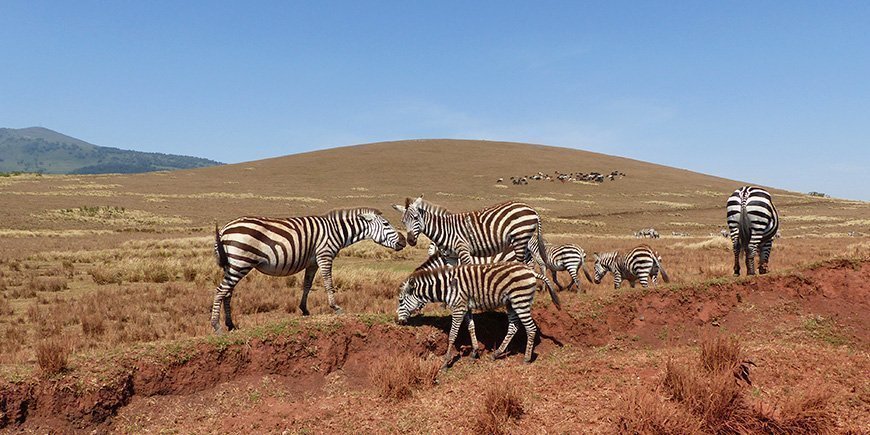
The long dry season extends from June to October and includes all our destinations in Tanzania.
Rainfall is unusual at this time, and humidity is low. Temperatures vary greatly depending on where you are in Tanzania, but you can generally expect clear skies and sunny weather. Particularly in northern Tanzania, the nights and mornings can be cold.
The weather in Tanzania all year round
No matter when you visit Tanzania, you’ll experience magnificent nature. The rain makes for lusher landscapes and lower humidity.
Below is an overview of the weather in Tanzania all year round.
January in Tanzania:
In January, the short dry season begins in the northern regions, on the coast and on Kilimanjaro, continuing until the end of February. The weather at this time is typically sunny and dry, although there may be showers.
In the southern regions, including in Nyerere National Park, there will typically be some rainfall in January.
February in Tanzania:
February is typically the hottest month in Tanzania. Although February falls in the short dry season in the northern regions, you should also be prepared for the occasional downpour.
In the south at Nyerere National Park, the rainy season continues unabated and temperatures are high.
March in Tanzania:
In March, the long rainy season begins in Tanzania.
The start of the month is a continuation of February: hot and mainly dry.
However, it starts to rain more as the month progresses, so the humidity is higher here, and afternoon rain is very common. In the southern regions, March is one of the wettest months, while it rains less in the northern regions.
April in Tanzania:
In April, the long rainy season continues, but although it typically rains heavily every day, it doesn’t usually rain all day.
Afternoon rain is quite normal. The rain makes the areas muddy, so it’s a good idea to bring some shoes that you don’t mind getting dirty when you go on safari in Tanzania during the rainy season. Leave those white trainers at home!
May in Tanzania:
The month of May marks the end of the rainy season, and after several months of rain, the landscape will typically be lush and green.
The rain continues until early to mid-May, when it gradually begins to subside as the month progresses. Again, it typically only rains in the afternoon.
June in Tanzania:
In June, the rain has largely subsided, and the dry season begins, although still with occasional showers.
You might want to layer up when visiting Tanzania in June so that you can easily remove a layer as the day progresses and temperatures rise after a chilly night and morning.
July in Tanzania:
July’s weather is very similar to the weather in June, when the temperatures at night can again be chilly, especially if you’re in higher locations such as Serengeti in the north, which has a higher altitude than Nyerere in the south.
The night time temperatures can sometimes dip to as low as five degrees depending on your location and altitude, so remember to bring warm clothing for evenings and mornings.
August in Tanzania:
In August, it is still the dry season in Tanzania, and temperatures continue to rise this month.
In August, like in the rest of the long dry season, it is unusual to experience rainfall, but you should still be prepared for all kinds of weather.
September in Tanzania:
The weather in September is very similar to the weather in August. You’re unlikely to experience rain, but lots of sun and blue skies instead.
Again, the temperature at night is a little cooler, and if you’re going on a morning safari, you might want to wear several layers, so that you can remove layers as the day progresses and the temperatures get higher.
October in Tanzania:
October is typically the last month of the dry season.
The start of the month continues to offer clear, sunny weather, but as the month progresses, the risk of rainfall increases. The weather in October can be a bit unpredictable, especially on the islands.
If it does rain, it will generally be light, brief showers.
November in Tanzania:
In November, the rainy season begins throughout Tanzania.
In contrast to the months following the short dry season, i.e. in the “long rainy season” from March to May, the rainfall in November is very light, unpredictable and of shorter duration.
December in Tanzania:
The rainy season continues through December throughout Tanzania.
The temperatures are a continuation of November, and you can expect light rain. However, the rain generally falls in the afternoon and does not typically last the whole day.
When is Tanzania’s weather best?
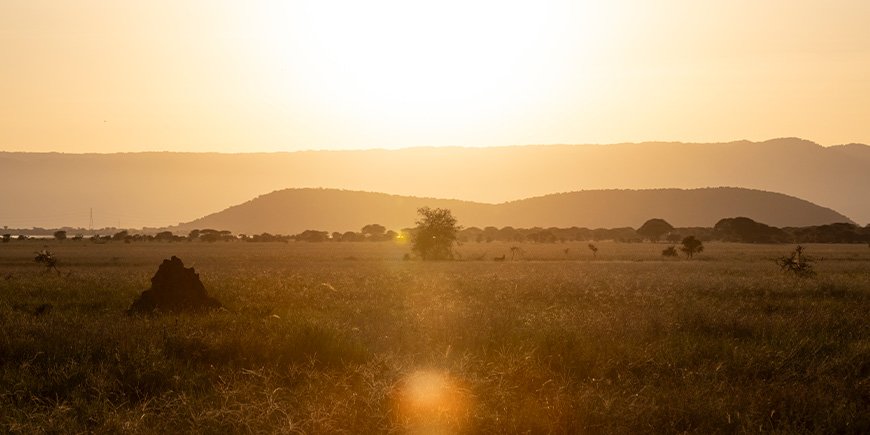
For many of us, the weather is a determining factor for when we choose to travel to a destination, and a lot of people ask us when it’s the best time for safari in Tanzania.
But just like in many of our destinations, the weather in Tanzania is unpredictable. You might be unlucky to experience rain on some days, even if you’re travelling in the dry season. And conversely, you might be lucky enough to experience days without rain during the rainy season. So there’s no such thing as a bad time, only bad clothing, so pack a variety of items so that you’re prepared if the weather changes.
Tanzania welcomes you with unique experiences, no matter when you choose to travel there. Even if you do experience a little rain.
TourCompass – From tourist to traveller
